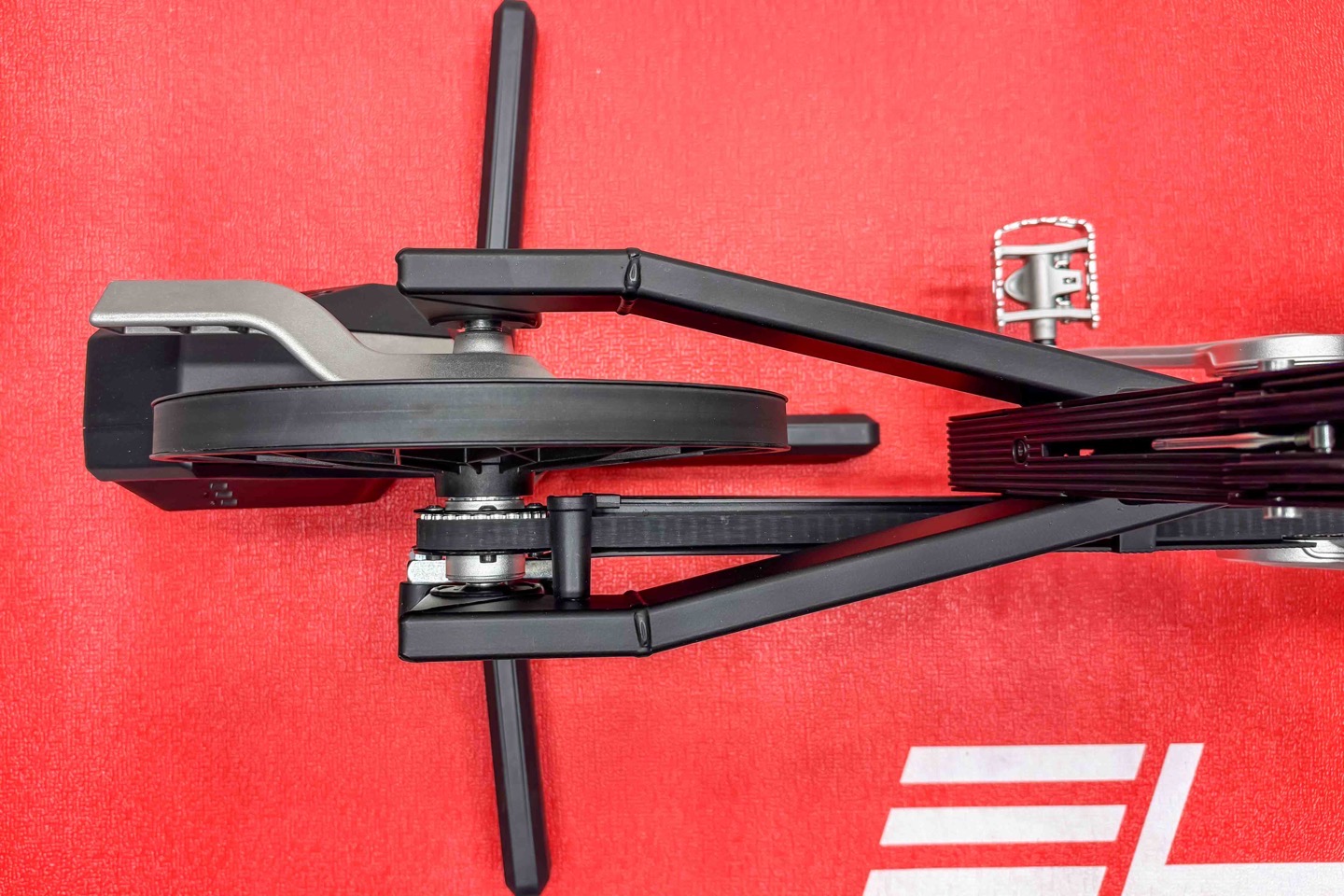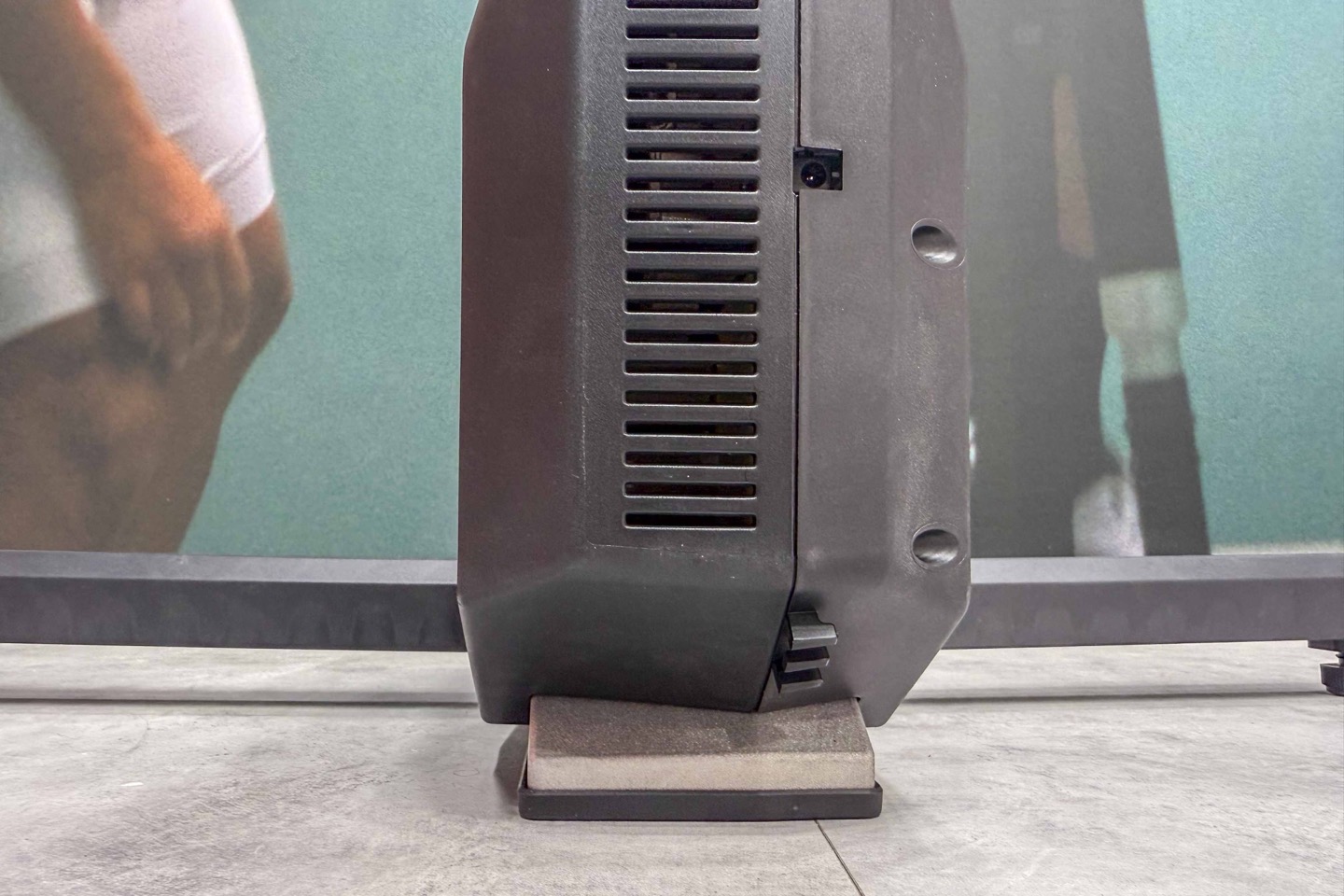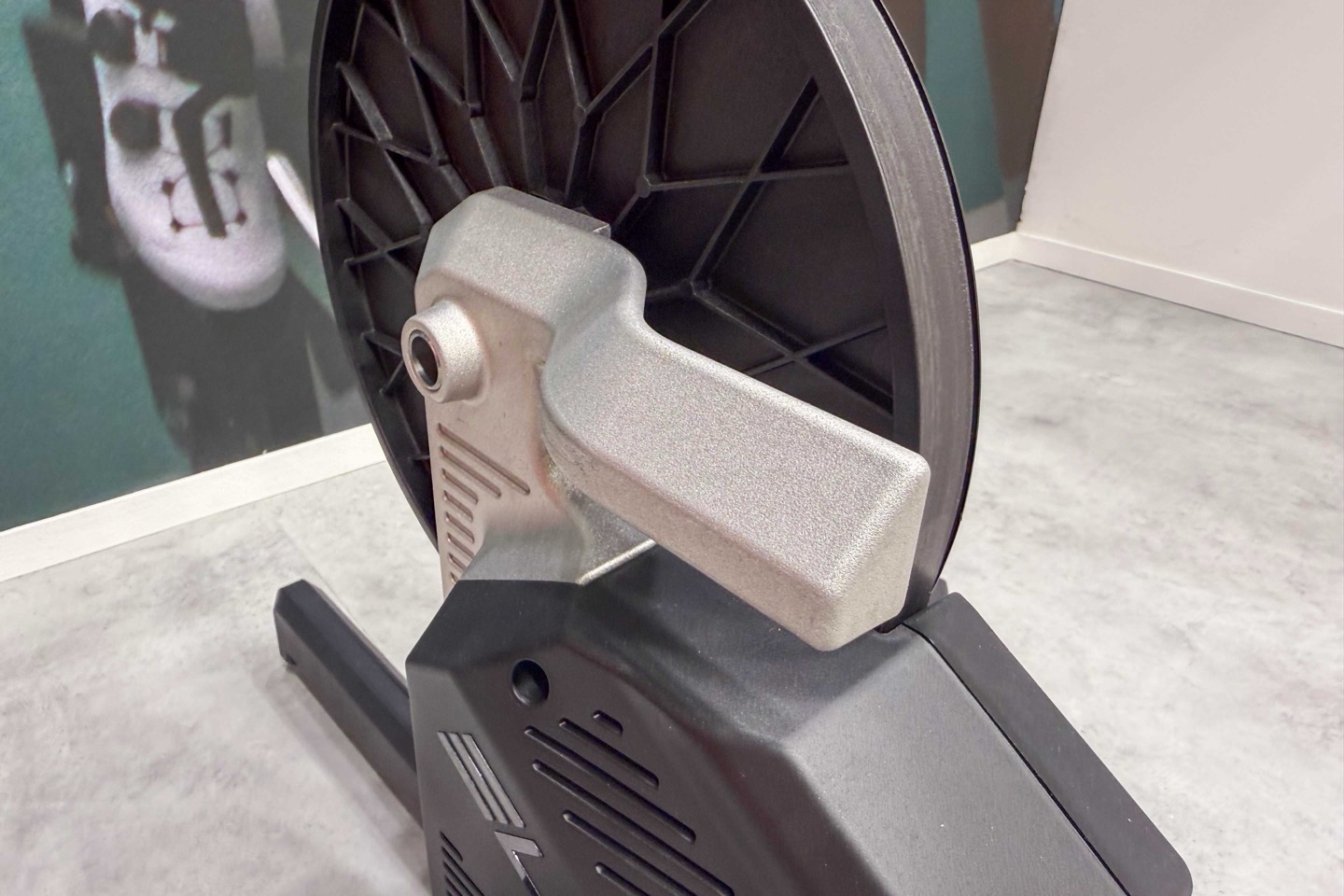Elite has announced their latest smart trainer, the Elite Rivo, a trainer designed to compete head-to-head with the likes of the JetBlack Victory and Wahoo KICKR CORE, both of which float in the sub-$500 range. Of course, as we’ve seen in recent years, Elite is bringing their A-Game in terms of specs, but more critically – standardization across their lineup.
This trainer is specifically designed to specifically replace the previous Elite Suito series, leaving Elite with three core trainers: Justo 2 (top-end), Avanti (mid-range), and now Rivo (budget). They’ll continue to provide Direto XR trainers to Decathlon for their Direto XR Team edition that was launched last year. But otherwise, it’s the three main aforementioned trainers going forward.
Note that Elite announced this today at Eurobike 2025, and while I have briefly pedaled a couple of seconds, ultimately, no show-floor pedaling can replace actual riding time back home. That’s where I’d dig into road feel, capabilities, accuracy, and more. So expect a legit review sometime down the road, putting it through its paces.
The Main Specs:

Here’s the main specs of the Rivo, which is technically a blend between a Suito (the flywheel/inertia elements), and the Avanti (the electronics, software, and braking elements).
Type: Direct Drive
Cassette Options: Either with Zwift Cog/Click, or install your own cassette
WiFi Builtin: Yes
Bluetooth Wireless Support: Bluetooth FTMS, Bluetooth Power, Zwift Protocol, and Bluetooth Speed/Cadence
ANT+ Wireless Support: Nope
Stated Accuracy: +/- 2%
Automatic/Continuous Calibration: No
Heart Rate & Sensor Bridging: Yes
Max Wattage: 920w @ 20KPH & 2,000w @ 40KPH
Flywheel Weight: 3.5KG/7.7KG
Elite Rizer (Gradient Simulator) compatibility: Yes
Axle Compatibility: Quick Release, and thru-axle 10×142 included (other available for purchase)
Wall Power Required: Nope!
Trainer weight: 10kg/22lbs
Max Rider Weight: 110kg/242.5lbs
Cassette Compatibility: Shimano/SRAM 9/10/11 Speed, Shimano 12s Road, SRAM SX 12sp, SRAM NX 12sp
Additional Freehub Compatibility (accessories): Shimano Micro-Spline, Campagnolo, SRAM XD/XDR
In the case of the Zwift Cog/Click, they’re using the Elite/Tacx variant of that Cog/Click, which gives a bit better flywheel ratios, to resolve some issues where the trainer floor and ceiling in certain gear combinations wasn’t quite working well with the original Zwift Cog/Click. Officially the Cog/Click supports 8-12sp drivetrains, though practically speaking, I use it on 13sp without any issues.
You’ll notice there’s no ANT+ in there. That’s not a surprise. We saw Decathlon skip it last year in one of their rebranded Magene trainers, but more notably, we saw Garmin start to close-up pieces of the ANT+ certification channel earlier this year. That doesn’t mean ANT+ is going away broadly, but it means companies will slowly shift away from it. In this specific instance, I don’t see any real issues. Elite has a multi-channel Bluetooth chipset in there, and more importantly, they broadcast a clean power feed (two things that Decathlon/Magene didn’t do, causing all sorts of issues). As long as companies broadcast a clean power feed (in addition to FTMS), they’ll maintain compatibility with virtually every watch/device made in the last 5-7 years.
Note that like most other smart trainers, it doesn’t have a power meter in it (neither does the $1,500 Wahoo KICKR MOVE). Though, Elite’s other higher-end ones do have power meters in them. Factually and historically speaking, it just doesn’t matter. What matters is whether or not a company can get accurate power. I’ve seen companies/models on both sides of that aisle get perfectly accurate power, and get perfectly inaccurate power. Again, it absolutely does not matter whether or not there’s a power meter in there, what matters is if the transmitted power values are accurate. All things I’ll test later.
In terms of the design, it has fold-out legs similar to most other Elite trainers:

It’s got a power port in the back, though can actually operate without power. There’s no Ethernet port adapter on this unit, but given how few people bought that anyway (let alone even fewer with WiFi not built-in), that’s logical.

And notably, it does indeed have a handle. Silly as it might sound, plenty of other budget-focused trainers don’t actually have handles.

Additionally, the unit is fully compatible with the Elite Square smart-bike frame, as well as the Elite Rizer gradient simulator:

Wrap-Up:

Ultimately, the Elite Rivo is aiming to modernize the Suito. New name, new hardware internals, but same rough flywheel/resistance specifications, and still a lightweight form factor. All while concurrently aiming to try and keep Wahoo and JetBlack at bay in the sub-500EUR market.
Additionally, it competes Elite’s refresh of their lineup – starting with the Justo 2 at the top-end, Avanti in the middle, and now Rivo at the budget price point. All three units share near-identical software and internal communications systems, minus the Rivo not having ANT+. Of course, each one gets more resistance and higher accuracy claims as you go up in price. But all three have compatibility with the Elite Square, as well as the Elite Rizer gradient simulator.
In any event, plenty more testing to be done going into the fall. As noted, Elite aims to start shipping these in the late August and early September timeframe to Europe, and then very shortly thereafter to the rest of the world. By then they hope to have a more clear picture of the USD pricing.
With that, thanks for reading!


0 Commentaires